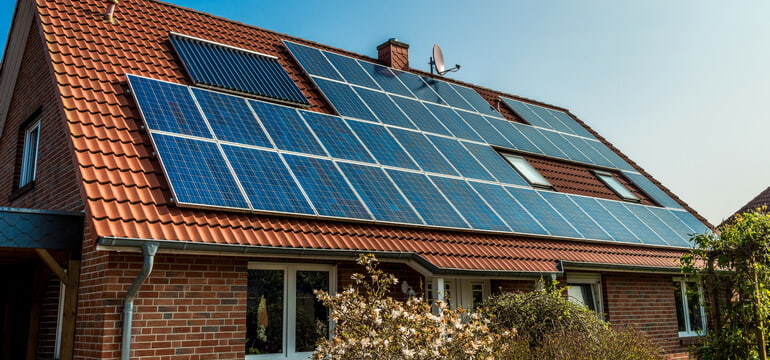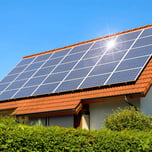Answer these simple questions and we will find you the BEST prices
Which type of solar quotes do you need?
It only takes 30 seconds
100% free with no obligation

Get up to 4 quotes by filling in only 1 quick form

Slash your energy bills by installing solar panels

For the average 2-3 bedroom house
- GreenMatch
- Solar Energy
- Solar PV Feed in Tariff Ends 2019
How You Can Still Benefit Before the Solar Feed in Tariff Ends in April 2019

What You Should Know about Feed-in Tariff Changes
Note: The Feed-in Tariff scheme has now officially ended. All existing registration under the scheme will continue to receive payments, however, no new applications will be processed. You can read about other solar panel grants on our site.
The solar PV Feed in Tariff in the UK is ending on 31 March 2019, but if you submit your FIT application on or before this day, your application could still be approved after the closure date—provided your installation fits within a deployment cap.
Therefore, if you are thinking of installing a solar panel, it would be a smart move to act quickly in order to still qualify for the Feed in Tariff payments from 2019 onward. The closure of the government FIT scheme should not deter you from installing a solar panel in your home, because you could still reap the benefits of FIT payments over the next 20 years.
By installing a MCS-certified solar panel in your home, you can then apply for the Feed in Tariff with a FIT-licensee. If this application is submitted before the cut-off date, you could still qualify to receive the payments for using the renewable energy.
If you are interested in buying a solar panel, then simply click the button below, fill in the contact form and GreenMatch will provide up to 3 quotes from trustworthy installers in your area. This service is completely free and non-binding.
- Quotes from local engineers
- Payment by finance available
- Save up to £1,567 per year
It only takes 30 seconds



How Does the Feed in Tariff Work?
The Feed in Tariff in the UK is a government scheme that was introduced in 2010 and encourages homeowners to opt for an array of small-scale renewable low carbon energy technologies. The technologies covered by the government FIT scheme are solar PV, wind, hydro, anaerobic digestion, and micro-combined heat and power.
The category of solar PV can be further split up into two categories, according to their Declared Net Capacity (DNC):

Deployment Caps and Feed in Tariff Rates
The Feed in Tariff is split up into four periods per year, which have their respective deployment caps. These deployment caps have a limited energy capacity - they are not determined by number of installations. Once a deployment cap has been filled, no more installations can qualify for FIT payments in that period.
In 2019 there is only one tariff period left, which is the first quarter of the year: 01 January - 31 March. In order to qualify for the Feed in Tariff before it ends in 2019, your installation must fall under this deployment cap.
If your application is processed after the deployment cap has been filled, it will go into a ‘queue’. You could still become eligible for the Feed in Tariff payments if there are cancellations in the cap you want to qualify for, therefore freeing up space.
The Feed in Tariff rates are dependent on the deployment cap your installation falls under. The rates have been determined for each tariff period until the end of the scheme, which is 31 March 2019. The rates are reduced with each period, which is called default degression. Simply put, this means that every three months the rates decrease.
Furthermore, if the deployment cap is filled within the period, then the rates will degress by an additional 10%, which is called contingent degression. For further information about specific Feed in Tariff rates, it would be best to consult your FIT-licensee.
A deployment cap determines the total capacity that can qualify and receive payments under the Feed in Tariff scheme. These caps are measured by their total capacity, rather than the number of installations.
To see if you can fall under the last deployment cap, you can check Ofgem’s weekly deployment update. This update reveals the status of the caps of all technologies within a given period.
Application Process for Domestic Solar PV Installations
In order to benefit from the FIT payments, you have to follow the application process and fulfil all criteria.
For small-scale solar panel installations (MCS-FIT) you have a few things to do in order to qualify.

When You Will Receive Your FIT Payments
Once you have signed the FIT terms and have provided the meter reading to your FIT-licensee, then you can start collecting payments. This is referred to as your eligibility date. Once you have submitted the meter reading, you should receive a payment within 90 days.
There have been many changes to the scheme so far, but as it stands currently, the eligibility date for applications that fall under the MCS-FIT scheme, that have been submitted on or after the 8th of February 2016, are the later date of these two:
Be sure to regularly send your meter readings to your energy supplier, as they are the ones that will calculate your FIT payments. Also report any changes to your solar PV installation, because this could affect your rates.
Don't Miss out on the Solar FIT Scheme
Since the introduction of this scheme, the number of solar panel installations grew exponentially, as the FIT rates were so generous. Over time, the government made numerous cuts to the FIT rates, and has now ultimately deemed that renewables like solar panels are now affordable enough that they no longer need to be subsidised. By 31 March 2019, the Feed in Tariff will be scrapped.
Aside from solar PV, there is another type of solar energy that is subsidised by the UK government, namely solar thermal. Solar thermal is used for heating, and is covered by the Renewable Heat Incentive (RHI) scheme.
Ready to start saving money on your energy bills? It's never been more economical to switch to solar power. Get up to 3 free, no-obligation quotes from trusted solar panel installers and start reaping the benefits of renewable energy. With GreenMatch, you can be sure you're getting a high-quality panels that will deliver reliable, efficient power for years to come for the best quote deals.
- Quotes from local engineers
- Payment by finance available
- Save up to £1,567 per year
It only takes 30 seconds




Natalie was the Content Manager at GreenMatch. She is educated in media & communications, and has several years of international experience in marketing and content creation. Natalie’s focus lies in the areas of finance, sustainability, business communications, and more. She and her content team have been published in reputable sites like EcoWatch, Sunday Post, Earth911, and more.
We strive to connect our customers with the right product and supplier. Would you like to be part of GreenMatch?


